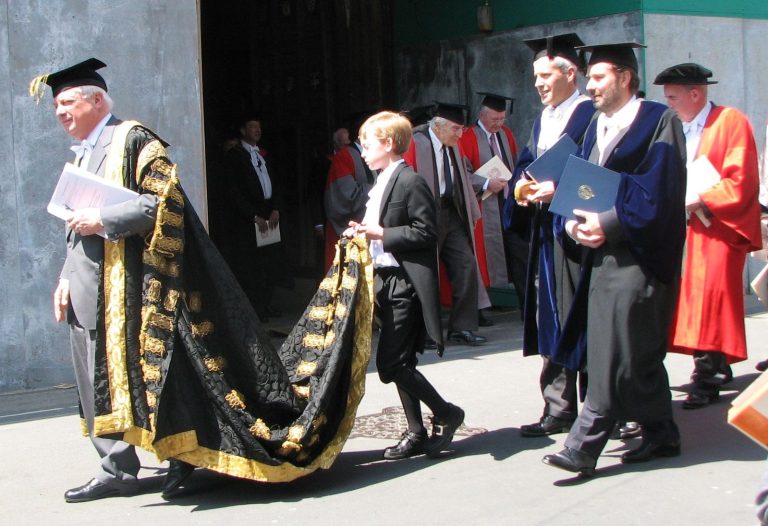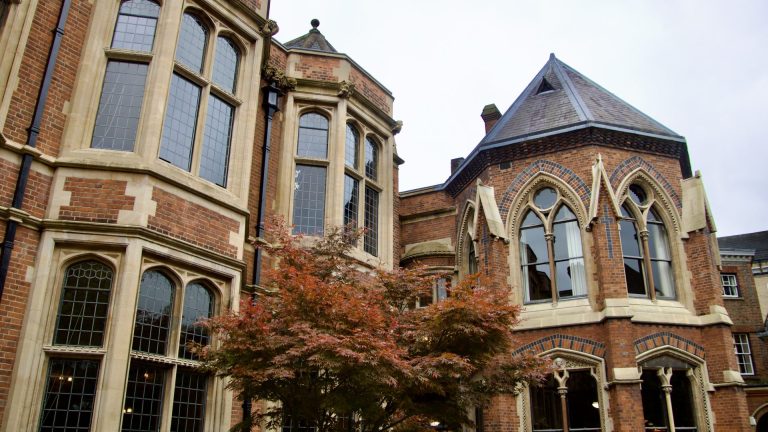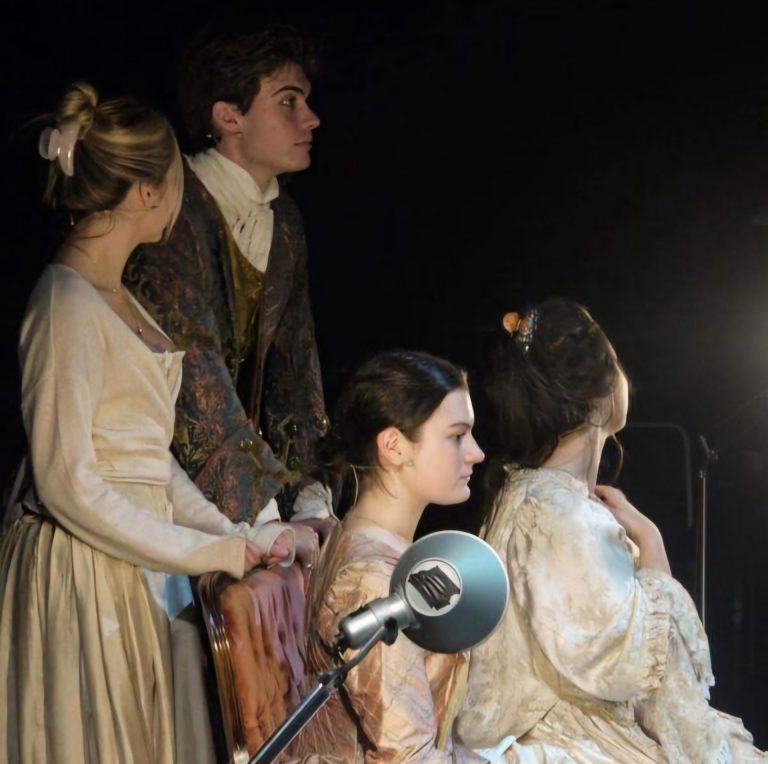The Oxford Union debated “This House would rejoin the European Union” at 10 p.m. Thursday following a painful delay that prompted star speaker Lord Heseltine to walk out.
The night started with Librarian Aryan Dhanwani’s resignation and motion to postpone the discussion of constitutional amendments. Yet the Union spent ten minutes discussing whether to have a discussion, with President-elect Israr Khan stating: “The Librarian is quite confused in his head – or should I say the ex-Librarian?”
A discussion was had, and a long one indeed. Attendees were treated to a parade of voting methods: Voice, counting membership cards, and a “Division of the House” that forced everyone to walk out of the chamber and rejoin – Lord Heseltine had enough. Despite the multitude of votes, nothing stuck, and the amendments remain uncertain pending a referendum.
Opening for the proposition at 10 p.m. was Director of Press Rosalie Chapman, who introduced the opposition speakers: Director of Research Daniyal Vemuri, Conservative MP Major Rt Hon Sir Desmond Swayne, former Brexit Party MEP The Rt Hon Baroness Fox of Buckley, and Conservative MP Sir Christopher Chope. Chapman remarked that Fox “founded the Academy of Ideas – I can only hope that one day she comes up with a good one”.
Chapman argued that “Brexit has become a national tragedy”, leaving the UK “isolated, diminished and weaker than before”. A strong and clear speaker, Chapman focused on the economic impact of Brexit on ordinary British people, before arguing that “Brexit has robbed a generation of its future”, preventing today’s youth from accessing the same rights to live, study and work in Europe as their parents had. She concluded her speech by admitting that the EU is not perfect, but that it is better for the UK to be part of it and that it is “not time to cling to the isolationist fantasies of small Britain” – perhaps taking a swing at those who might take the “Great” in Great Britain too literally.
Opening for the opposition, Daniyal Vemuri also introduced the planned proposition speakers: Chapman. Lord Liddle, and journalist Rachel Johnson. Whatever pun he might have prepared for Lord Heseltine unfortunately went to waste.
In an apparent parody of an isolationist Brexiteer, Vemuri began his speech waving a full-size UK flag in front of him and proclaiming that Brexit allowed Britain to be free from “bureaucrats in Brussels”, before quickly putting it to one side, arguing that such claims were “overblown”. Vemuri confessed that he was in fact a “die-hard Remainer” who viewed Brexit as akin to “cutting off your right arm” but still opposed the motion, believing that it was neither pragmatic nor politically desirable to attempt to rejoin the EU. In more dramatic terms, he compared rejoining to “putting your arm back on, but halfway through, Nigel Farage jumps out of a closet and slaps you” – a pity that this didn’t happen in time for Halloween last week.
In proposition, Lord Liddle began his speech by explaining that he had first joined the Union 59 years ago but had never spoken in a debate there, having been a state-educated, “shy, nervous lad” who felt out of place in the Union as a student, but who somehow “ended up in the House of Lords” – a statement that was met with applause from the chamber. This tendency towards nostalgia continued throughout his speech. Liddle argued that the “best moments in European history” after the two World Wars included the production of the European Convention on Human Rights (ECHR) and the passing of the Schuman declaration, which helped to “build a common framework of democracy and human rights”. Liddle ended his speech by proclaiming that, after the re-election of Donald Trump, “the case for a united Europe is stronger today than it ever was”, adding that “Europe has to stand together to prove to the US that it’s an equal partner in the NATO alliance”.
Next up in opposition was Sir Desmond Swayne, a fiery and energetic speaker from the outset. He commenced his speech with a reference to J.R.R. Tolkien’s “most ancient and wisest creations”, the Ents, explaining that they should teach us to “not be so hasty” in making decisions – surely a familiar regret among students after attending one too many late-night college Entz. Swayne went on to argue that, having spent 40 years in the EU before deciding to leave, we had “barely given it three years” to assess the impact of Brexit and that rejoining required “much more mature thought”. Swayne concluded his speech by explaining that “flawed assumptions and incomplete data” were prevalent in economic forecasts cited by the proposition – neatly sidestepping the question of the actual economic consequences of Brexit.
Proposition’s third speaker was Rachel Johnson, who began by “roasting” opposition speaker Sir Christopher Chope on being the “sole objector to the government’s proposal to ban upskirting…which is why I wore trousers tonight”. She went on to recount her family’s move to Brussels in 1973, due to her father’s being “one of the first British civil servants to live and work in Europe”, and that his vision was for his children to become “des bons petits Européens” (good little Europeans). Returning to the theme of “generational unfairness”, Johnson quipped that those who voted to leave “have gone to the great Wetherspoons in the sky” – something many Oxford students would undoubtedly look forward to. She ended her speech with a rather touching mention of her brother, former Prime Minister Boris Johnson, saying that despite their political differences, she was “immensely proud” of him as he “got Brexit done”, before joking that now, the country “has got Boris done”.
The third opposition speaker was Baroness Fox, who struck a very different tone to the other speakers, proclaiming that “this Union is obsessed with itself” and that “the British working-class delivered Brexit” rather than Oxford alumni. In contrast to the previous two opposition speakers, Fox explicitly argued that “the UK is in a better position after Brexit” and that Brexit was the “start of a democratic revolution” for “millions” of people who were “previously patronised and ignored”. She then outlined the “mounting problems” in the EU, from “European voters turning towards populist, Eurosceptic parties” to the loss of “millions of manufacturing jobs” in recent years, concluding that “the EU is a thoroughly antidemocratic and illiberal institution”.
Closing the proposition’s arguments was Union Secretary, Siddhant Nagrath, who admitted that he “had had 40 minutes to prepare” his speech after the departure of Lord Heseltine. Nagrath began by sounding the alarm that “Britain is an economic and political mess” and admitted that he himself would not stay in the UK after graduation due to its poor job market. In contrast, he claimed that without the EU, the UK “doesn’t have the ability to fix its economy on its own”, adding that “if this country had more spicy food, it would fix many problems”. A hot take indeed. Nagrath concluded by arguing that the EU was “not a dictatorial body” seeking to control countries, but rather “a very friendly place” – a description that would fit in any Oxford college prospectus.
The opposition’s closing arguments were made by Sir Christopher Chope, who began with a rebuttal of Nagrath’s conclusion, claiming that “Europe is a very friendly place, but not the EU”. Chope then drew on his experience as a barrister in divorce cases to draw an analogy between “controlling” spouses and the EU, arguing that the UK was “seduced” into joining the EU and that its veto ability was “taken away”, forcing it to put a Brexit referendum on the table. He called out the “snide remarks” made earlier by the proposition, which “attacked” him for “raising the issue of a referendum in the House of Commons”, and concluded his speech by proclaiming that we “need to have the self-confidence to believe in our great nation” and to “retain control over our own lives and destiny”.
Perhaps too consumed by its internal politics, the Union has not told Cherwell the final vote counts.
Editors’ note: Commentary herein represents the opinion of the reporter, not of Cherwell.











